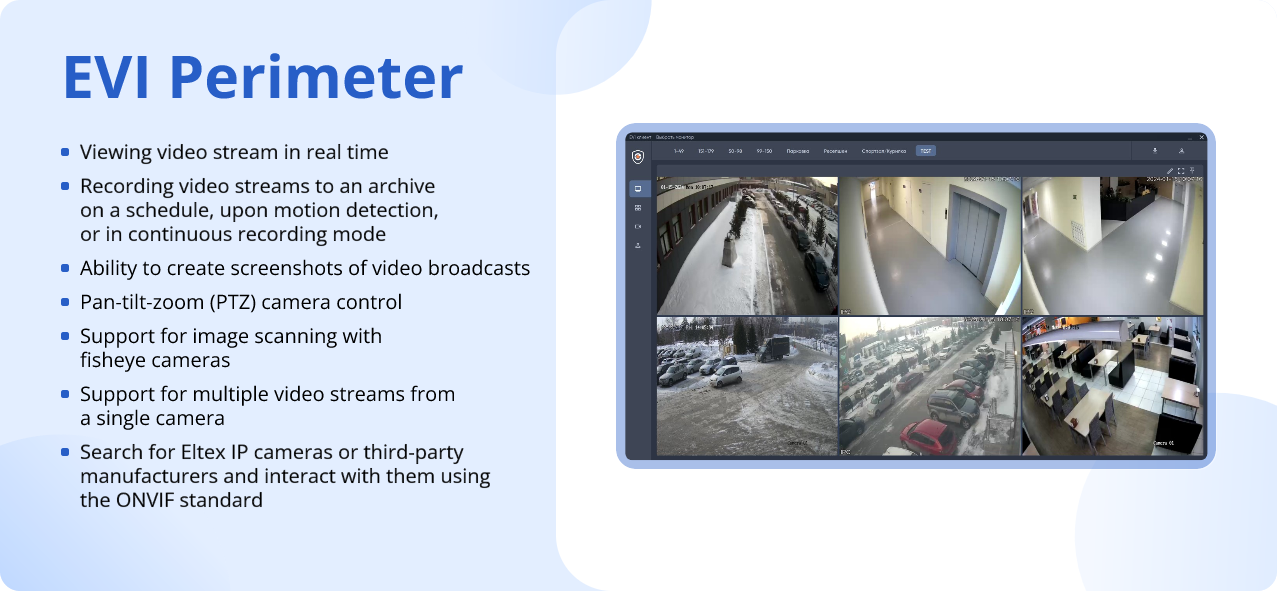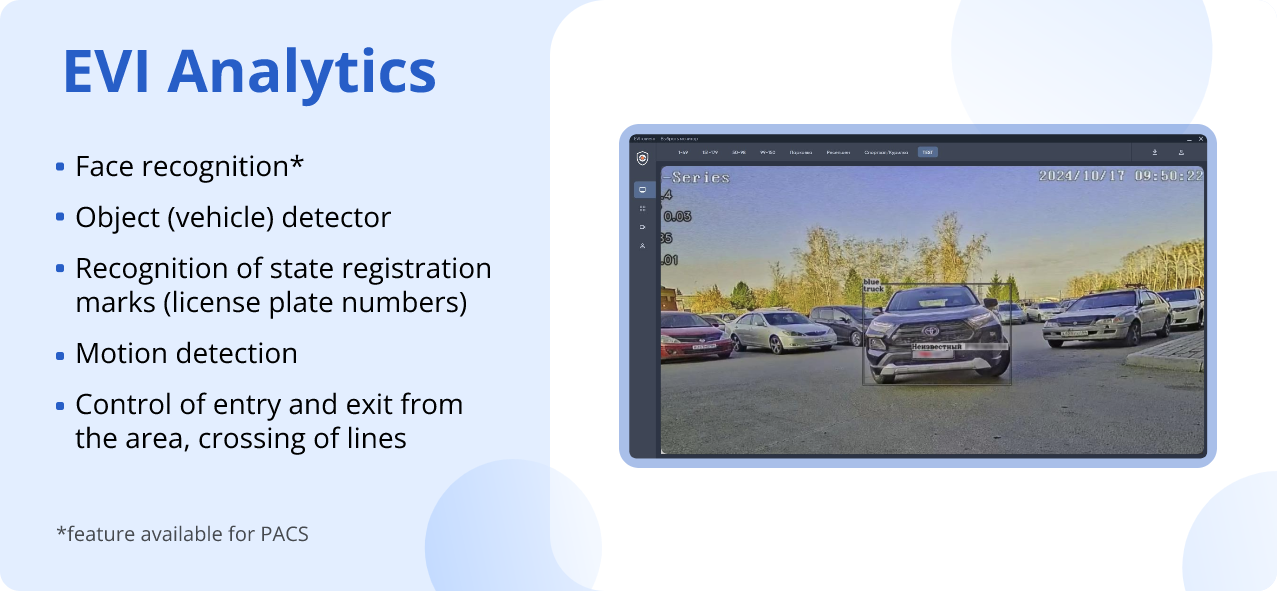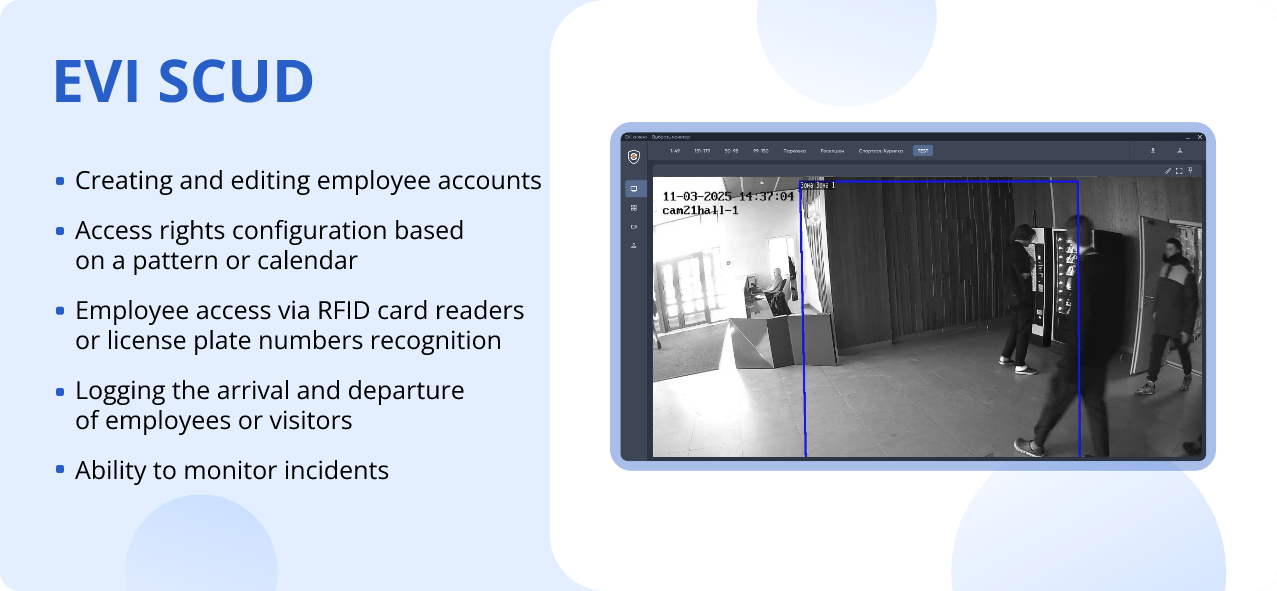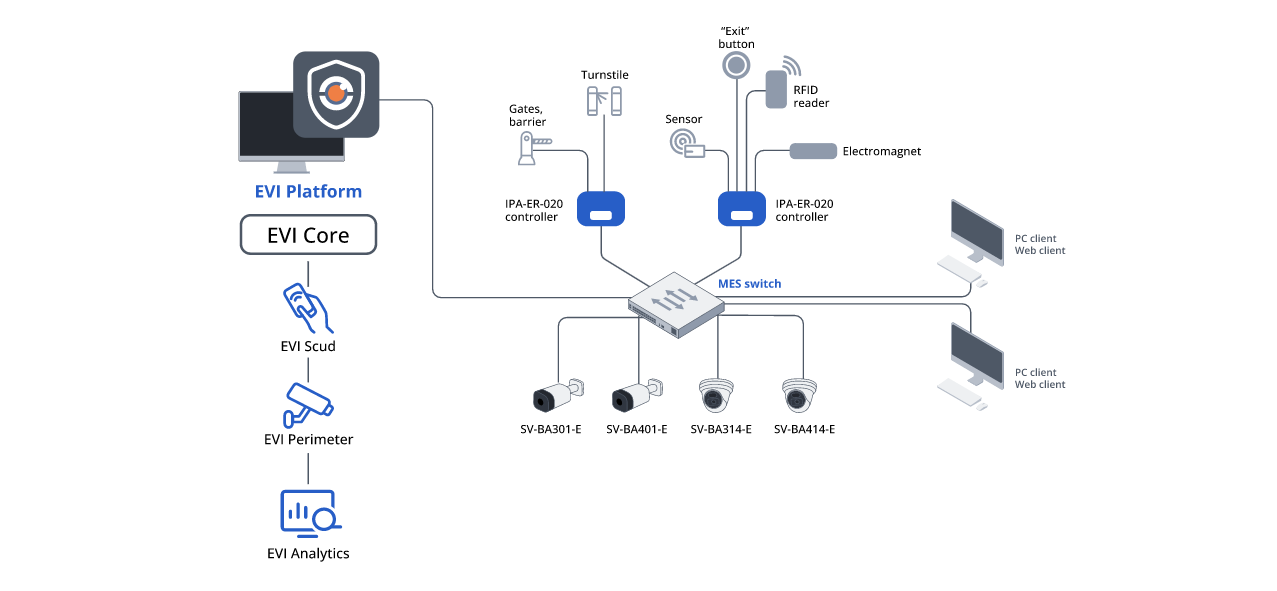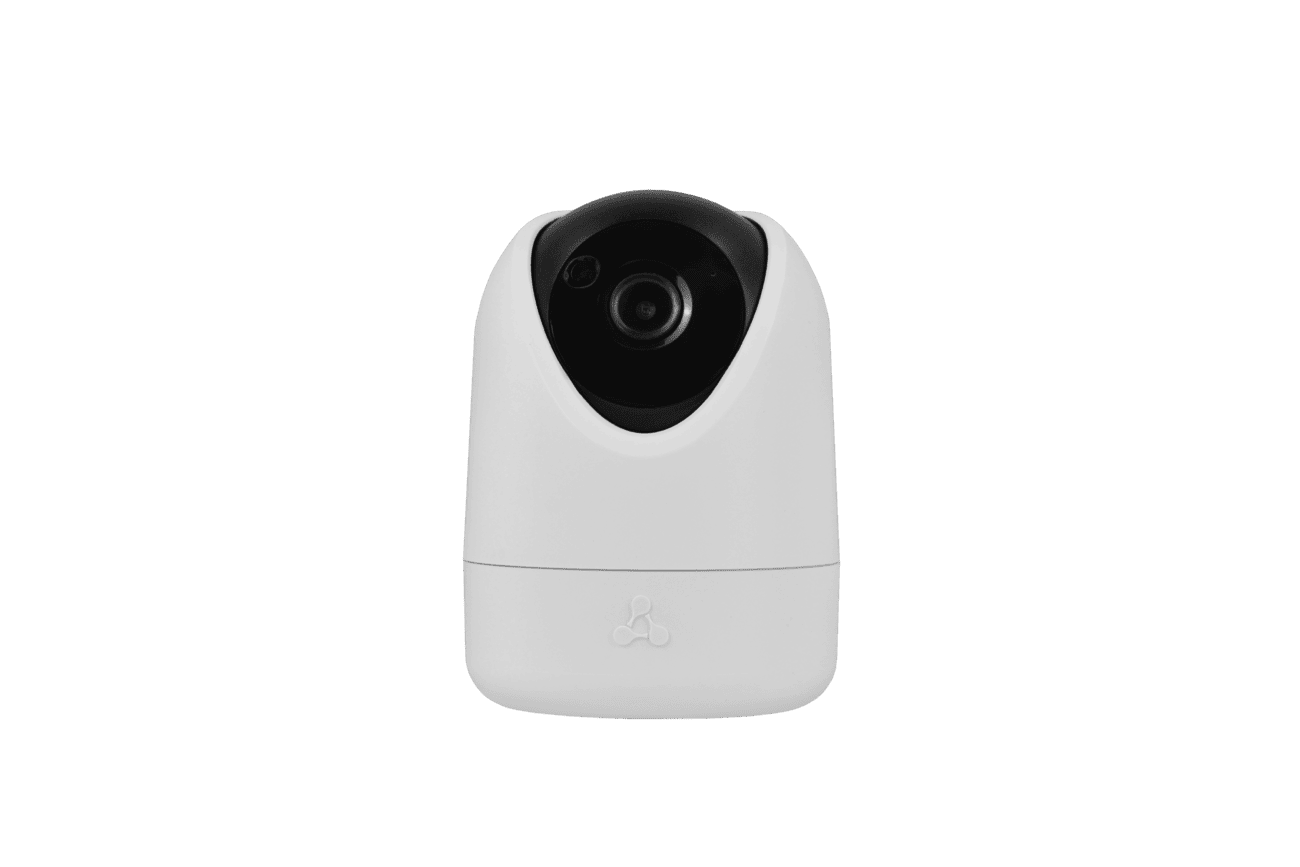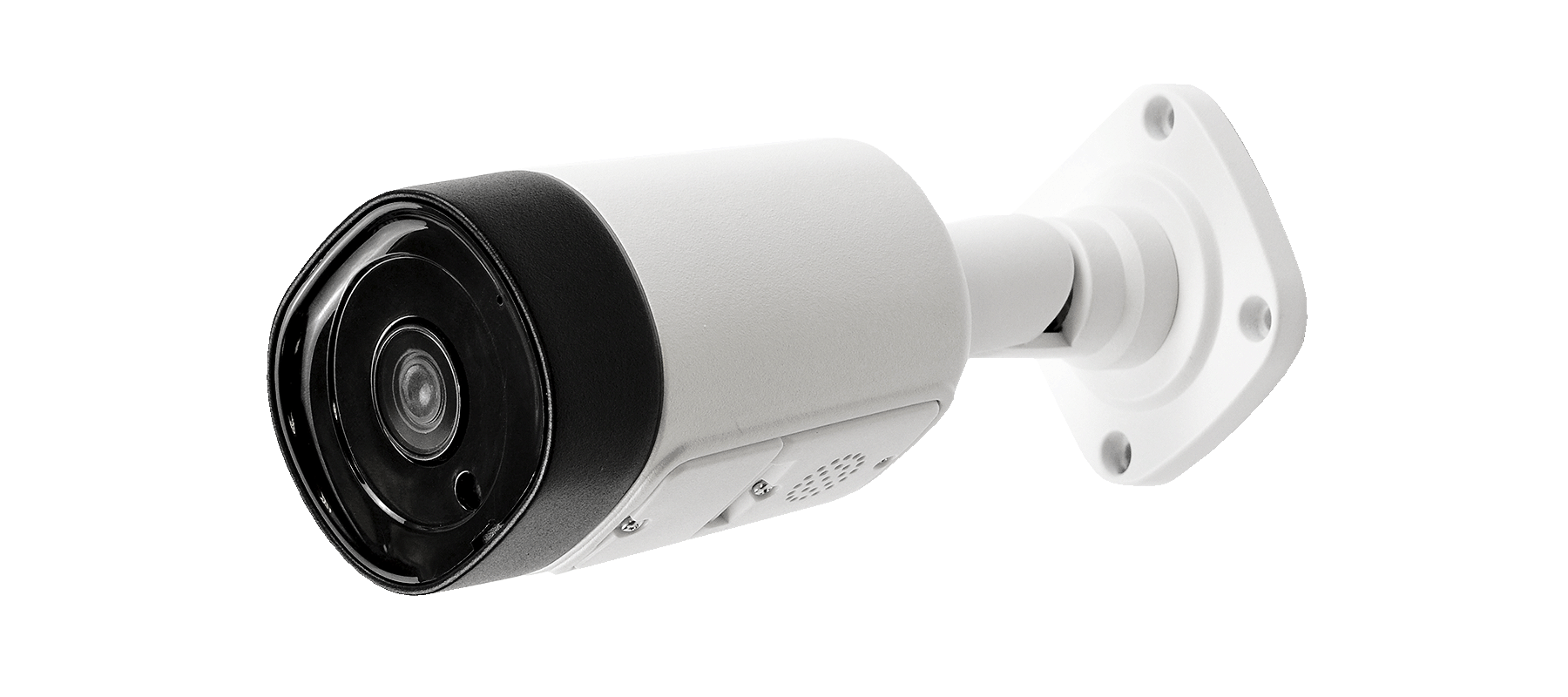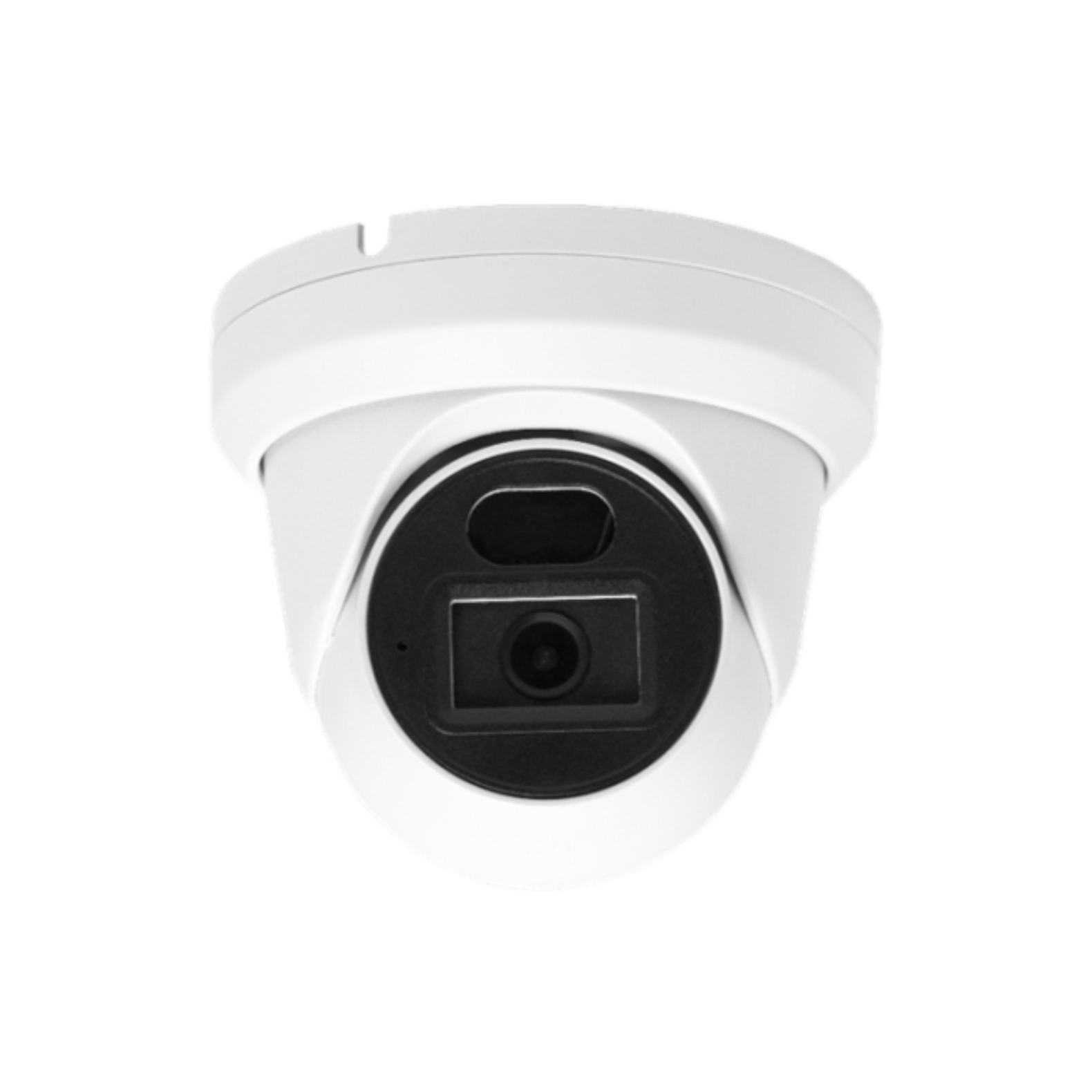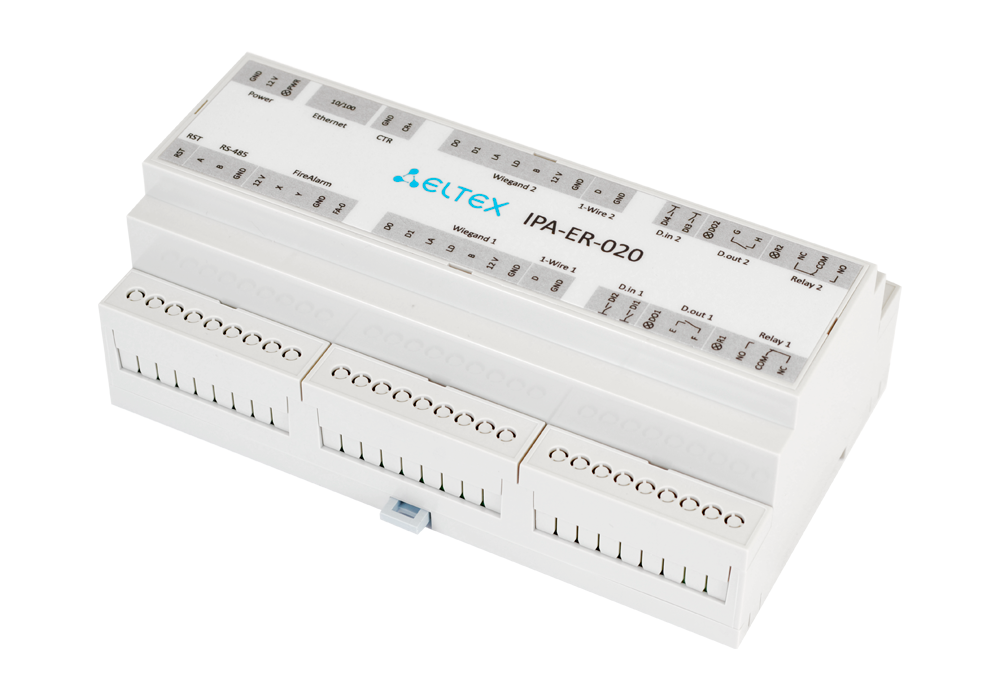Security components: how we develop the EVI platform for video surveillance, analytics and access control


Introduction
Ensuring security in offices and production facilities is a sophisticated task. It is no longer enough to simply install cameras, turnstiles and put a security service to monitor this. There is a need for a platform capable of combining key components into a single entity with centralized management and intelligent data processing.
For example, video surveillance previously served as a kind of "black box" that only recorded events for later viewing, but today it is able to analyze data, identify suspicious situations, label them and promptly notify about them.
In this article, we will talk about the current trends in the security systems market at facilities, the development of our own EVI platform, which combines video surveillance, analytics and access control (ACS) in a single product, and hardware solutions for it.
Global trends
The commercial security system market is growing every year. According to the MarketandMarkets report, the market was valued at almost $223 billion and is projected to grow to $381.66 billion by 2030. Compound Annual Growth Rate (CAGR) is 11.4%, which indicates a stable demand for such solutions and a desire to introduce innovations.
The share of video analytics, video surveillance and access control accounts for about a quarter of this figure. The video surveillance segment (VMS – Video Management System) shows an increase of 12%. At the same time, it is increasingly being considered by researchers in conjunction with video analytics solutions. The ACS market has an average growth of 7.8% and amounts to 11.1 billion dollars, and the demand for integration with related products is growing.
The key drivers of transformation are:
- Convergence. Video surveillance, analytics, and access control are actively combined into a single solution. This ensures a faster response to situations and a reduction in false alarms by using interconnected data from different systems.
- Mass adoption of artificial intelligence (AI) and machine vision. Security systems have begun to transform from passive event recorders, where a person's role is constant monitoring, into an active tool for detecting incidents, informing about them, and automating processes. Modern algorithms are able to detect movement, behavioral patterns, identify abandoned objects, identify crowds, provide biometric access, and so on.
- Expanding the task pool. In most cases, the tools have long gone beyond just security logic in terms of functionality. They evolve as a result of the need to solve a wide range of problems, from marketing and analytics to operational and managerial.
The widespread of some of them was stimulated by the COVID-19 pandemic. Facial recognition for access control and wearing masks, detecting crowds of people and maintaining social distance – all of them quickly became the standard tools from experimental ones.
- Cloud and hybrid solutions. Video surveillance, analytics, and access control systems can be provided as a service (Video Surveillance as a Service (VSaaS) and Access Control as a Service (ACaaS)) according to the principles of "some data is stored on-site, some on the provider's cloud" or "all data is stored on the provider's cloud". This reduces costs and simplifies management, but is mainly used by small companies with less critical data storage requirements. Large companies prefer to deploy and store all data locally (On-Premise) or on their own clouds, including due to reduced control and dependence on the security policies of the service provider.
- Integration with IoT and IIoT. Modern security systems are integrated with the Internet of Things, becoming part of the integrated infrastructure of smart buildings and smart industrial facilities. Motion, smoke detectors, temperature, humidity, light sensors and other similar devices complement them, creating conditions for "multi-layered" monitoring. At enterprises, IIoT sensors monitor the condition of industrial equipment, gas leaks, and disruptions to technological processes, integrating with other control mechanisms.
Russian market trends
Russian market trends mostly mirror the global ones, although there are a few differences. The main factor in recent years has been the restriction of access to foreign platforms, which stimulates the growth of domestic solutions and their preference by companies. According to experts, "... the share of Russian products in the field of software, especially in the field of video analytics, can reach 80%, while the share of domestic equipment in integrated video surveillance solutions does not exceed 60%."
Trust in domestic manufacturers has grown significantly. The numbers also show this. Businesses understand that local companies can respond more quickly to market needs, and their ecosystems will be sustainable and long-term. A space is being created for the development of new players and products, and as a result, competition is growing.
An interesting point is observed in the segment of integration of ACS with video surveillance and analytics. If in Western markets these systems have been developing more often in parallel and only recently there has been a tendency to combine into a single solution, Russian developers are more likely to design solutions already with it in mind. This is due, among other things, to the peculiarities of Russian legislation and requirements for the protection of facilities, especially critical infrastructure.
The course towards digital sovereignty stimulates the development of local platforms. Government organizations and companies with state participation are switching to Russian software. The requirements for functionality remain high, and customers expect Russian systems to have capabilities comparable to their international counterparts.
EVI: from an internal need to a commercial solution
The history of the EVI platform began with a need. Eltex is a large company with almost 2,000 employees. In addition, it has many production and office spaces. Existing third-party solutions did not provide the necessary depth of integration with the corporate infrastructure and were not flexible enough for the needs of the company.
An important condition for the development of our own product for the security of facilities has also become a deep expertise in the field of creating network equipment and software. With many years of development experience, the Eltex team understood well the principles of building scalable systems.
In 2023, the first product was created, the EVI Perimeter video surveillance system. The initial versions already offered key features for full-fledged monitoring of facilities: connecting IP cameras from different manufacturers, online monitoring with video wall support via an application, recording and storing an archive, and a basic set of analytics. In parallel with the improvement of the system, in-house operation and testing in third-party infrastructures began.
At the same time, we began the transition to a modular architecture. Video surveillance and analytics were separated into separate modules, while simultaneously improving them and developing a new access control module (ACS). This allowed us to work deeper into each segment and subsequently implement new functions faster.
As a result, the EVI platform, the Eltex ecosystem, was formed, combining three modules based on the common EVI Core:
- EVI Perimeter – video monitoring;
- EVI SCUD – object access control;
- EVI Analytics – real-time analytics, functions in conjunction with other modules.
The main features of the modules are listed below.
Hardware
We develop a comprehensive security solution where each piece of equipment does not just perform a separate function, but works as part of a single system. Thanks to this, all EVI components and equipment are closely integrated with each other and ensure maximum efficiency of the system as a whole.
Simultaneously with the development of the security software platform, we are creating our own hardware base, improving it and supplementing it with new solutions.
- The IPA-ER-020 controller has been developed for the EVI SCUD module, which provides differentiated access control to objects. The controller supports various types of readers and actuators, and allows flexible configuration of access policies to objects, including biometrics.
- For video surveillance, IP cameras in dome and cylindrical form factors have been designed for indoor and outdoor use. In addition to video recording of events, cameras serve as a tool for video analytics when operating with the EVI Analytics module. With their help, biometric face access and other features are implemented, which can be viewed above.
- For modern access points to objects, we have designed the SVP-100 video panel. The device is installed at the entrance and is equipped with a face recognition camera. The large screen allows the employees to see themselves in real time and position their face correctly for accurate reading of biometrics. Data from the panel's camera is transferred to the EVI SCUD module for identification and verification of access rights. After confirmation, the door or turnstile opens. The video panel increases the speed and convenience of the passage, eliminating the need for access cards or other identifiers.
The video panel increases the speed and convenience of the passage, eliminating the need for access cards or other identifiers.
Thus, for the tasks of biometric identification and access control, the EVI system offers two hardware implementation options. The first is a classic solution with IP cameras that perform video surveillance and video analytics functions throughout the facility. The second is a video panel, created specifically for access points and providing a comfortable passage for employees.
EVI main features and development plans
When developing the EVI platform and its further evolution, we are guided by the following principles:
- Modularity, which we have already mentioned above. This allows using only the needed tools and expanding the functionality if necessary.
- Complexity. The EVI ecosystem includes equipment (video surveillance cameras, an ACS controller) and software with guaranteed component compatibility and unified technical support.
- Flexibility. From the very beginning of the development, we intended the product to be highly compatible. Support for ONVIF and RTSP standards for cameras, Wiegand, RS-485 for the access controller, and other features make the platform flexible and adaptive.
Plans
The functionality and convenience of EVI are evolving with each new version. Users get new tools for effective work.
- We are working on expanding the analytical capabilities of the system. At the moment, online face recognition, object detection, recognition of car license plates, motion detection and line crossing control are already available.
In the near future: adding face recognition and car license plates according to a list, fire and smoke detection, anti-sabotage, inter-camera tracking, analytics for retail (counting people, heat maps), etc.
- Special attention is paid to compatibility with corporate systems, and this area is actively developing.
Conclusion
Commercial security products are undergoing significant changes under the influence of technological factors and company requests. The industry is moving from isolated components to ecosystems, from passive event capture to proactive incident detection.
Facility security is a continuous process that requires regular improvement of tools, adaptation to new threats and changing conditions. And in this context, EVI's development vector aligns with market demands.
Mentioned products
- Motorized Wi-Fi camera with real-time video monitoring capability
- Cylindrical IP camera with PoE support
- Dome IP video surveillance camera with PoE support
- Multifunctional device for inter acting with physical access control system via EVI Platform
